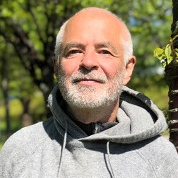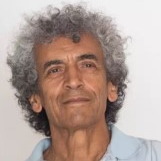Quantum Information Revolution: Impact to Foundations
A special issue of Entropy (ISSN 1099-4300). This special issue belongs to the section "Multidisciplinary Applications".
Deadline for manuscript submissions: closed (15 December 2019) | Viewed by 57089
Special Issue Editors
Interests: quantum foundations; information; probability; contextuality; applications of the mathematical formalism of quantum theory outside of physics: cognition, psychology, decision making, economics, finances, and social and political sciences; p-adic numbers; p-adic and ultrametric analysis; dynamical systems; p-adic theoretical physics; utrametric models of cognition and psychological behavior; p-adic models in geophysics and petroleum research
Special Issues, Collections and Topics in MDPI journals
Interests: quantum measurement; quantum nonlocality; two-state-vector formalism (TSVF); thermodynamic aspects of life
Special Issues, Collections and Topics in MDPI journals
Special Issue Information
Dear Colleagues,
The recent quantum information revolution has, not only technological, but also foundational outputs. It completely changes our image of quantum theory, which becomes quantum information theory. In this Special Issue we would like to update the foundational novelty of modern quantum theory. We invite all kinds of contributions devoted not only to coupling of foundations with the quantum information revolution, but also general development of quantum theory and its mathematical formalism, as well as its novel applications, e.g., applications to modeling cognition, biological, social, and political processes.
The areas covered include:
- Foundations of quantum information theory and quantum probability
- Generalized probabilistic models
- Quantum contextuality and generalized contextual models
- Bell’s inequality, entanglement, quantum nonlocality, hidden variables
- Weak measurements: theoretical and interpretational questions.
- Quantum-like models outside physics
- Derivations of quantum formalism from natural postulates
- The role the complementarity principle in quantum information theory
- Complementarity versus contextuality
Of course, possible topics need not be restricted to the list above; any contribution directed to development of quantum foundations and the corresponding mathematical apparatus are welcome.
Prof. Andrei Khrennikov
Prof. Avshalom C. Elitzur
Guest Editors
Manuscript Submission Information
Manuscripts should be submitted online at www.mdpi.com by registering and logging in to this website. Once you are registered, click here to go to the submission form. Manuscripts can be submitted until the deadline. All submissions that pass pre-check are peer-reviewed. Accepted papers will be published continuously in the journal (as soon as accepted) and will be listed together on the special issue website. Research articles, review articles as well as short communications are invited. For planned papers, a title and short abstract (about 100 words) can be sent to the Editorial Office for announcement on this website.
Submitted manuscripts should not have been published previously, nor be under consideration for publication elsewhere (except conference proceedings papers). All manuscripts are thoroughly refereed through a single-blind peer-review process. A guide for authors and other relevant information for submission of manuscripts is available on the Instructions for Authors page. Entropy is an international peer-reviewed open access monthly journal published by MDPI.
Please visit the Instructions for Authors page before submitting a manuscript. The Article Processing Charge (APC) for publication in this open access journal is 2600 CHF (Swiss Francs). Submitted papers should be well formatted and use good English. Authors may use MDPI's English editing service prior to publication or during author revisions.







